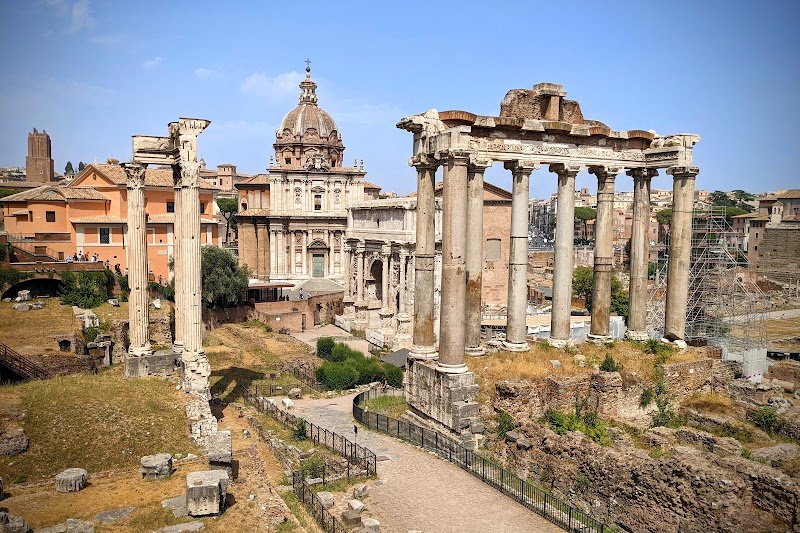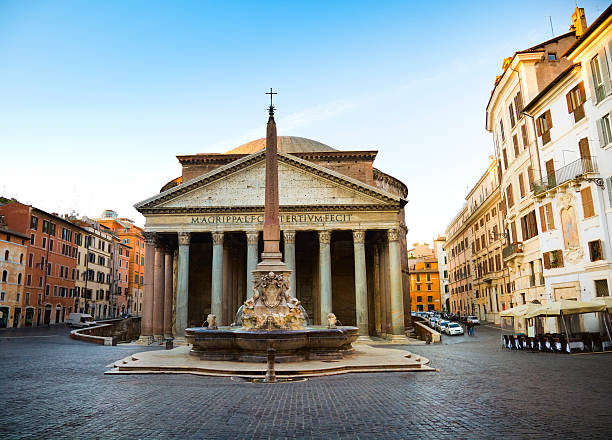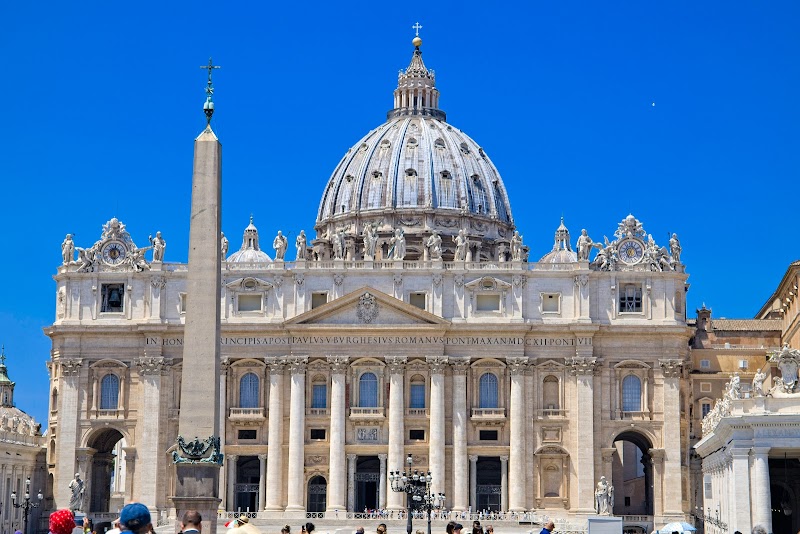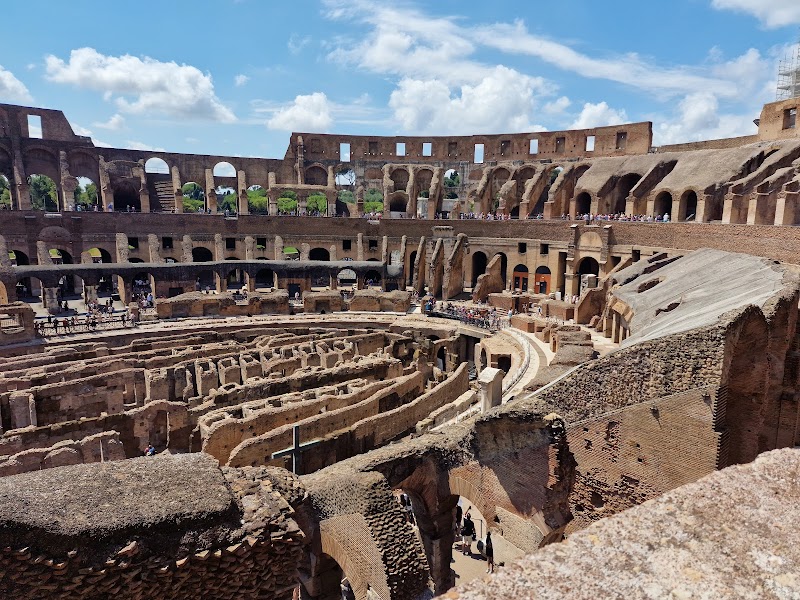Welcome to Rome: The Eternal City
Did you know that Rome, the captivating capital of Italy, welcomes over 10 million tourists a year? This timeless city is an enchanting blend of ancient ruins, renaissance artistry, and modern Italian charm. With the Colosseum, the Vatican City, and the stunning Trevi Fountain at its heart, Rome offers an unparalleled journey through time.
But, Rome is more than just its iconic landmarks. It's a city to be savored, explored, and discovered. That's where our tourist map comes in. This valuable tool is your passport to an unforgettable Roman adventure, helping you delve deeper into the city's rich tapestry and truly make the most of your visit.
Discover Rome Beyond the Ordinary: Unseen Sights and Experiences
Soak in the magic of Rome, a city that transcends time and space, bringing you face to face with the grandeur of centuries past while simultaneously delighting with modern surprises. Here is a list of attractions that go beyond the ordinary, taking you on a journey through the lesser-known but equally enchanting facets of Rome.
- The Appian Way
- The Trastevere Neighborhood
- The Jewish Ghetto
- MAXXI Museum
- The Orange Garden
- The Capuchin Crypt
- The Piazza Navona
Walking the Ancient Paths: The Appian Way
As one of the earliest and strategically most important Roman roads of the ancient republic, the Appian Way offers a journey back in time. As you walk along this ancient route, you can almost hear the clatter of Roman chariots and the footsteps of history echoing around you. Make sure to have a look at the detailed tourist map of Lazio to chart your exploration of this historic path.
Experience La Dolce Vita: Trastevere Neighborhood
Wander the cobblestone streets of Trastevere to experience the charming, bohemian side of Rome. This vibrant neighborhood, with its ivy-clad buildings, tiny piazzas, and trendy bars, offers a delightful contrast to the stately grandeur of Rome's better-known attractions. It's a place where you can enjoy authentic Roman cuisine, engage with locals, and catch a glimpse of everyday Roman life.
A Slice of History: The Jewish Ghetto
The Jewish Ghetto in Rome stands as a poignant reminder of the city's rich and varied history. Today, it's a thriving neighborhood, home to kosher food shops, Jewish bakeries, and the striking Great Synagogue. Make sure to visit the Jewish Museum for a comprehensive understanding of the Jewish community's history in Rome.
Breathe in Modernity: MAXXI Museum
Delve into the modern side of Rome at the MAXXI Museum, Italy’s first national institution dedicated to contemporary creativity. Situated in the vibrant Flaminio district, you can consult our tourist map of Florence to plan your visit. The stunning architectural design of the museum itself is worth a visit, and the modern art and architecture collections within are sure to inspire.
A Hidden Gem: The Orange Garden
Perched on the Aventine Hill, The Orange Garden, or Giardino degli Aranci, provides a tranquil retreat from the hustle and bustle of Rome. This beautifully manicured garden offers a panoramic view of the city, making it the perfect spot for a relaxing picnic or a romantic sunset.
The Mysterious: The Capuchin Crypt
Step into the unusual and slightly eerie world of the Capuchin Crypt, decorated with the skeletal remains of thousands of Capuchin friars. It's a sobering and thought-provoking experience, offering a different perspective on life and death.
Artistic Masterpiece: Piazza Navona
Home to three magnificent fountains, including Bernini's famous Fountain of the Four Rivers, Piazza Navona is a testament to Rome's artistic and architectural splendor. Once the site of ancient Roman games, today, it's a vibrant public space, filled with artists, street performers, and bustling cafes.

Practical Information for Rome
Transportation and Mobility
Embrace Rome's extensive transportation network to traverse the Eternal City. Public transportation options include buses, trams, metro lines, and taxis. Buses and trams operate from 5:30 am to midnight, with a select number of night buses running after. For quicker travel, consider using the metro, with Line A (Orange) and Line B (Blue) covering many tourist hotspots. Metro services start at 5:30 am and run until 11:30 pm from Monday to Thursday, extending to 1:30 am on Fridays and Saturdays. A single ticket costs €1.50 and is valid for 100 minutes.
Alternatively, Rome's taxi services are reliable and regulated, with an initial fare of €3.00, rising to €4.50 after 10 pm and on Sundays. Remember to only use licensed white taxis to avoid scams.
Schedules and Prices
When planning your visit, consider that Rome’s museums and archaeological sites typically open between 8:30 am to 7:30 pm, with the last entry often one hour before closing. Prices vary, but standard entry fees range from €8 to €15, with many offering reduced prices for EU citizens aged between 18-25, and free entry for those under 18 or over 65.
The Roma Pass offers a fantastic money-saving option, providing free entry to two museums or archaeological sites and unlimited public transportation for 48 or 72 hours. Prices for this pass are €28 for 48 hours and €38.50 for 72 hours.
Safety Tips
Rome is a safe city for tourists, but like any major city, it's not immune to petty crime. Always be aware of your surroundings, particularly in crowded places like bus and metro stations where pickpocketing is common. It's also advisable to keep a photocopy of your passport and leave the original in a safe place.
Practical Recommendations
The best time to visit Rome is either from April to June or from late September to October, when the weather is mild and the crowds are smaller. Remember, many shops and restaurants close for a few hours in the afternoon for 'riposo', the Italian version of a siesta, typically between 1 pm and 4 pm. Also, most museums are closed on Mondays, so plan your itinerary accordingly.
It's also worth noting that many churches in Rome require visitors to have their shoulders and knees covered, so pack accordingly. Lastly, don't forget to carry a water bottle as Rome has numerous public drinking fountains with fresh, clean water.

Frequently Asked Questions
1. Can I visit the Catacombs of Rome?
Yes, you can! Exploring the Catacombs of Rome is a unique experience that delves deep into the city's history. The most famous ones are the Catacombs of San Callisto, San Sebastiano, and Santa Domitilla. Do remember, however, that these underground burial sites are sacred Christian places, so treat them with respect.
2. What's the easiest way to navigate the historic center of Rome?
Since the historic center of Rome is mostly pedestrianized, it's best explored on foot. This allows you to fully appreciate the intricate architecture and soak in the atmosphere. For longer distances, consider using the extensive network of trams and buses.
3. Are there any specific rules for dining out in Rome?
Italian dining is a delightful experience but comes with its own set of etiquette. Remember, Italians usually eat late with lunch starting around 1 pm and dinner not until 8 pm. Also, bread is generally used to mop up sauce from your plate, not eaten as an appetizer. Finally, cappuccinos are typically enjoyed in the morning, not after meals.
4. Are there any unique shopping experiences in Rome?
For a one-of-a-kind shopping experience, head to the Mercato Monti, Rome's urban market. Here you'll find a mix of vintage clothing, independent designers, and local crafts. For high-end fashion, Via del Corso and Via Condotti are home to some of the world's most luxurious brands.
5. What are some lesser-known museums worth visiting in Rome?
If you're looking to escape the crowds, consider visiting Rome's lesser-known museums. The Museo Nazionale Romano houses an impressive collection of ancient art, while the Centrale Montemartini exhibits classical statues against a backdrop of vintage machinery. For something different, the Museo delle Cere is an intriguing wax museum.
6. Can I take a day trip from Rome to Pompeii?
Yes, Pompeii is a popular day trip from Rome. Located about 150 miles south, you can reach it by train in less than three hours. Be sure to allow plenty of time to explore this extensive archaeological site and consider hiring a guide for a more in-depth understanding of the ancient city.

Book the best activities of Rome now!

